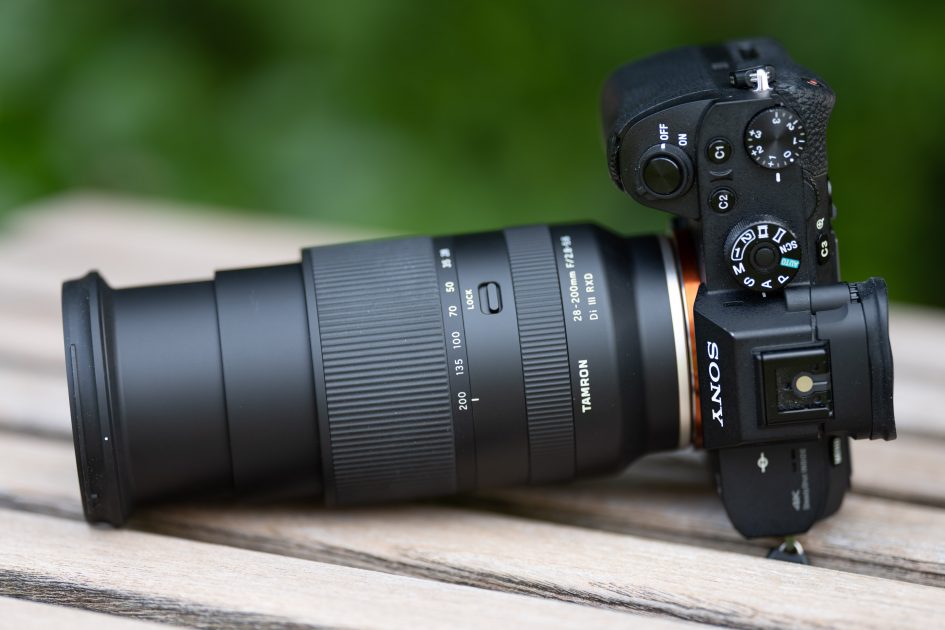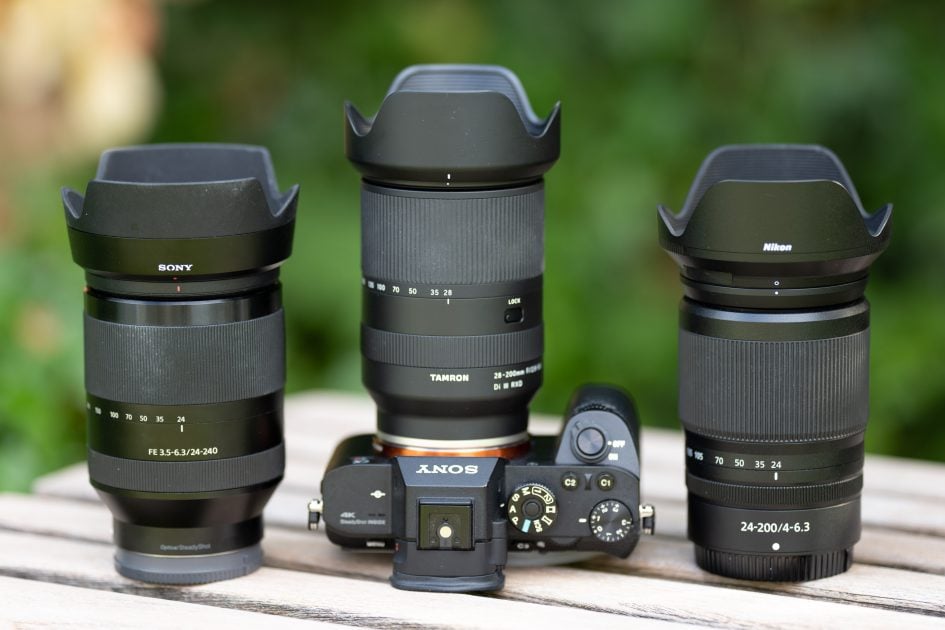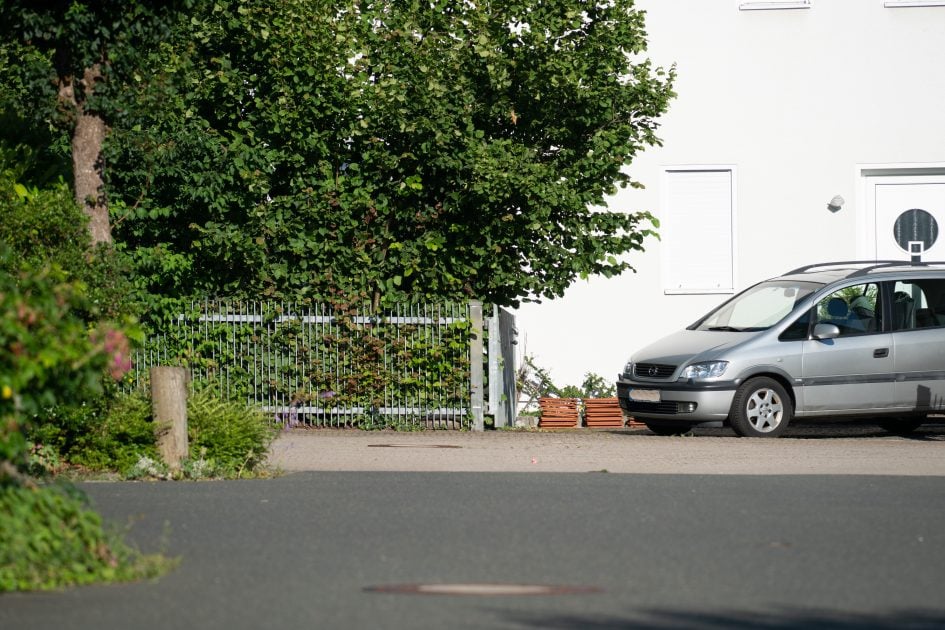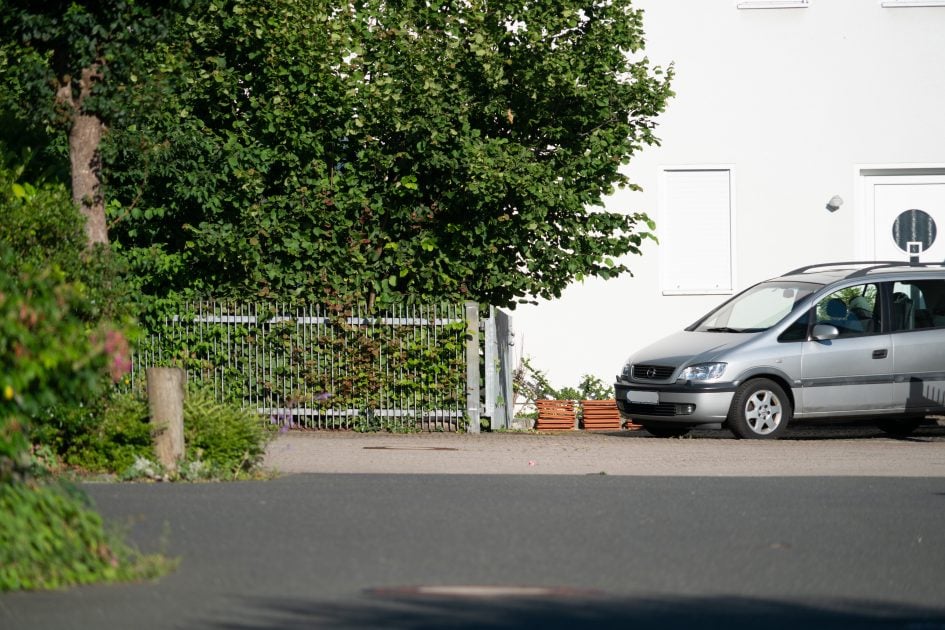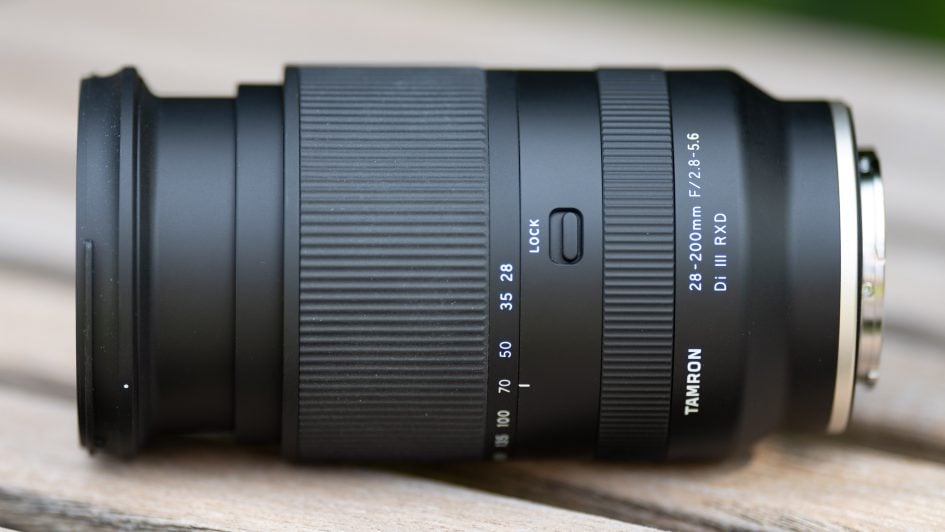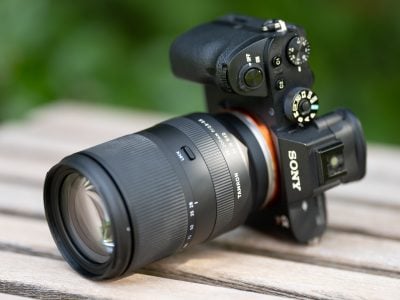Tamron 28-200mm f2.8-5.6 Di III RXD review
-
-
Written by Thomas
Intro
The Tamron 28-200mm f2.8-5.6 Di III RXD (model A071) is an all-in-one zoom designed for Sony’s Alpha mirrorless cameras and corrected for full-frame sensors. Announced in June 2020, it is a more affordable and lightweight alternative to carrying Tamron’s 28-75mm f2.8 Di III plus 70-180mm f2.8 Di III zoom lenses although you lose-out on a constant f2.8 focal ratio – and some image quality.
Physically, the 28-200mm f2.8-5.6 Di III is a little smaller and 200g / 7 oz. lighter than the alternative from Sony, the FE 24-240mm f3.5-6.3 OSS, and both lenses extend while zooming. The new Tamron has no optical stabilization and relies solely on the image stabilization provided by the Sony Alpha mirrorless cameras while the Sony FE 24-240mm f3.5-6.3 OSS has optical image stabilization.
In my tests I compared the new Tamron 28-200mm f2.8-5.6 Di III to the alternative from Sony – and the equally new Nikon Z 24-200mm f4.0-6.3 VR. The Nikon may look like an odd choice in this comparison but Tamron has announced that they are working on Z- and RF-mount versions of their lenses. PS – if you’re interested in the other full-frame zoom lenses for E-mount in Tamron’s line-up check out my in-depth reviews: Tamron 17-28mm f2.8 Di III RXD review / Tamron 28-75mm f2.8 Di III RXD review / Tamron 70-180mm f2.8 Di III VXD.
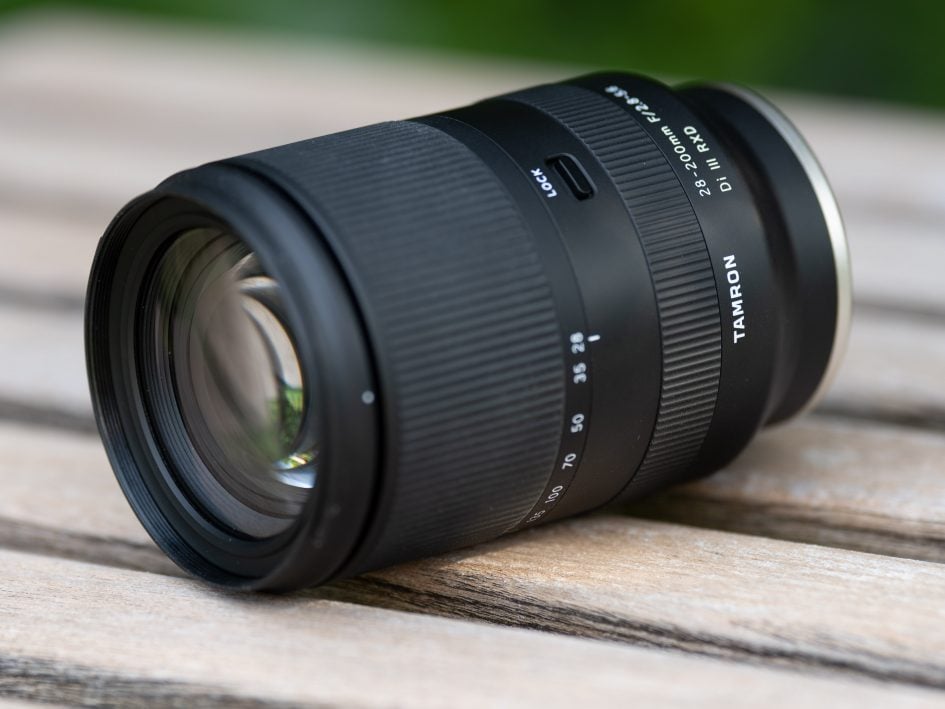
Facts from the catalog
Let’s compare the new Tamron 28-200mm f2.8-5.6 Di III to the Sony FE 24-240mm f3.5-6.3 OSS (“Sony” for short) and the Nikon Z 24-200mm f4.0-6.3 VR (“Nikon”). As usual I’ve rated the features with a [+] (or [++]), when it’s better than average or even state of the art, a [0] if it’s standard or just average, and [-] if there’s a disadvantage.
Size (diameter x length): At 74 x 117mm (2.9 x 4.6in.) plus 28mm for the lens hood (which is 87mm in diameter) the new Tamron is a pretty small lens, even a bit slimmer than the Sony at 81 x 118mm (3.2 x 4.7in) + 36mm lens hood. The Nikon is 77 x 114mm (3.0 x 4.5in.) + 38mm lens hood. All three lenses have a double barrel design and extend when zoomed to the longest focal length: The Tamron to 201mm, the Sony to 221mm, the Nikon to 215mm (incl. lens hood). [+]
Weight: 558g (19.7 oz.) plus 25g for the lens hood. Complementing the new zoom lens with Tamron’s 17-28mm f2.8 Di III to cover the very wide end makes for a lightweight combo of only 1kg (2.2 lb.) covering a 12x zoom range. The Sony is 744g (26.2 oz.) + 39g lens hood, the Nikon is 565g (19.9 oz.) + 22g lens hood. Btw.: The Tamron 28-75mm f2.8 Di III plus Tamron 70-180mm f2.8 Di III weigh 1.4kg (3.1lb.) together (incl. lens hoods) – a sizeable difference compared to the new super-zoom. But then you gain a constant f2.8 aperture. [+]
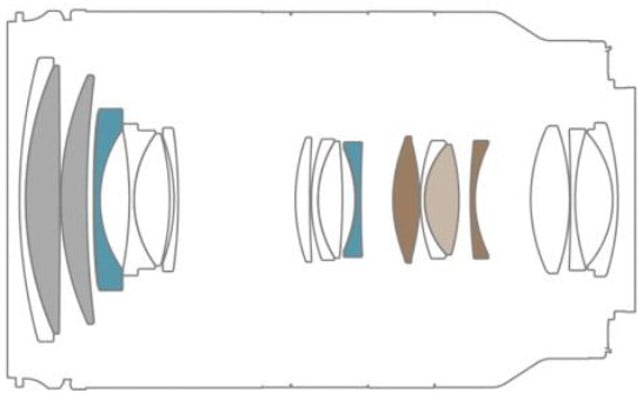
Optics: The Tamron 28-200mm f2.8-5.6 Di III employs 18 elements in 14 groups including 3 special dispersion elements and 4 aspherical elements. The Sony and Nikon are of a similarly complex construction. [+]
Focal ratio: The Tamron starts with a bright f2.8 focal ratio at the short end which is 2/3 of a stop brighter than the Sony and 1 stop brighter than the Nikon. At 70mm focal length the Tamron is at f4.0, the Sony at f5.0 and the Nikon at f6.0. The Tamron achieves its slowest focal ratio of f5.6 from 150mm focal length onward. So the Tamron maintains a 2/3-1EV advantage in light gathering power and subject isolation over the Sony resp. Nikon up to a focal length of 150mm. [+]
Coverage: With its 10x zoom-range the Sony has the upper hand over the 7.1x coverage of the Tamron and the 8.3x range of the Nikon. This gives the Sony and Nikon a 9 degrees wider angle of view on the short end (84 degrees vs. 75 degrees). And at 240mm focal length the Sony has 20% more reach on the long end compared to the Tamron and Nikon. [0]
Closest focus distance is 0.19m (0.6ft.) with a magnification of 1:3.0 and a working distance of only 5 cm (2in.) at 28mm focal length. At 200mm focal length maximum magnification is 1:3.5 which is still quite good and results in a much more usable working distance of around 0.57m (1.9ft.). The Sony and the Nikon achieve their maximum magnification at their longest focal length: it is 1:3.6 at 0.6m working distance for the Sony and 1:3.4 at 0.49m working distance for the Nikon. A magnification of 1:10 is achieved at the longest focal length at 2.07m (6.8ft.) distance for the Tamron, 2.39m (7.8ft.) for the Sony, 2.04m (6.7ft.) for the Nikon. [+]
Filter-thread: The Tamron 28-200mm f2.8-5.6 Di III shares the same 67mm filter-thread with the 17-28mm f2.8 Di III, 28-75mm f2.8 Di III, and 70-180mm f2.8 Di III which is very convenient – and saves costs. The Nikon also needs 67mm filters, the Sony takes 72mm filters. [+]
Image stabilization: The new Tamron does not offer optical stabilization. The lens solely relies on the sensor-based image stabilization of the Sony Alpha mirrorless cameras. Both the Sony and Nikon zoom lens have optical image stabilization built in which works together with the sensor-based image stabilization of their respective camera bodies. [0]
Auto focus: Yes, with built-in stepping motor drive. Manual-focus override is by simply turning the dedicated focus ring. The focus ring has a variable gearing (like Tamron’s other f2.8 zooms for E-mount) which allows for very precise manual focus when turned slowly but cannot be switched to linear gearing. Which makes smooth focus pulling for videographers almost impossible. [+]
All three lenses in this comparison cover full frame sensors or can equally be used on a cropped APS-C/DX camera body: the Tamron 28-200mm on a Sony Alpha 6×00 is equivalent to a 47-300mm zoom lens on a full-frame camera body. [+]
Price: The lens comes at a recommended retail price of 850 EUR (incl. 16% VAT) / 729 USD / 799 GBP. The Sony goes for 780 EUR / 1050 USD / 690 GBP, the Nikon is at 970 EUR / 900 USD / 850 GBP. So the new Tamron seems a bit overpriced in EUR and GBP considering its narrower zoom-range and missing optical stabilization in comparison to the Sony and Nikon. But I think we’ll be seeing street prices for the Tamron that are considerably below the RRP. [0]
The lens comes without a pouch but the lens hood is included and is reversible for transport. Same for the Sony. [0]
Aperture ring and other control elements: The new Tamron has a zoom-lock (as has the Nikon) but neither of the three lenses has a switch for AF/MF or image stabilization. The Nikon has a multi-function control ring which can be assigned to operate the aperture, exposure compensation, ISO or focus. [0]
Sealing: yes, a rubber grommet at the lens-mount plus further special weather-sealing throughout the construction, just like the Sony or Nikon. But the Tamron and Nikon have fluorine-coating on the front element to repel water, dust, and dirt and make cleaning easier – a feature the Sony misses. [+]
The score in the “features-department” is 0[-]/5[0]/9[+] which makes the new Tamron 28-200mm f2.8-5.6 Di III look like a well balanced design. On the plus side is its small size and low weight together with a large f2.8 focal ratio on the short end plus a very useful magnification in close-up shooting. The missing optical image stabilization might not be too big a drawback as the stabilization of Sony mirrorless bodies is pretty effective. But you might not like that the lens starts at 28mm on the short end. 24mm focal length is sometimes the ticket to get the framing right in wide landscape or architecture shots. Here the Sony FE 24-240mm f3.5-6.3 OSS has a clear advantage with its 24mm starting length and its 10x zoom range.
Three super-zoom lenses
Above from left to right: Sony 24-240mm f3.5-6.3 OSS, Tamron 28-200mm f2.8-5.6 Di III, Nikon Z 24-200mm f4.0-6.3 VR
Alternatives
Currently there’s only one alternative for Tamron’s 28-200mm zoom lens available in Sony’s E-mount, and for Nikon’s Z-mount there’s also only one:
- Sony’s stabilized FE 24-240mm f3.5-6.3 OSS for about 780 EUR / 1050 USD / 690 GBP is a mirrorless design from 2015. It’s 200g heavier and 2/3 of a stop slower over most of the zoom range than Tamron’s new 28-200mm. Its major benefits are the optical stabilization and the greater zoom-range from 24mm to 240mm. This gives a 9 degrees wider angle of view at the short end and 20% more reach at the long end over the Tamron.
- The Z 24-200mm f4.0-6.3 VR is Nikon’s first super-zoom for their new Z series of mirrorless cameras and costs 970 EUR / 900 USD / 850 GBP. It has optical image stabilization and shares the benefit of starting at 24mm focal length with the Sony. In size and weight it is very similar to the Tamron. For more information see my Nikon Z 24-200mm f4-6.3 VR review-so-far which I soon hope to extend into a full review.
Here is the angle of view that the new Tamron 28-200mm f2.8-5.6 Di III covers with its 7.1x zoom compared to the coverage of Sony’s 10x zoom and Nikon’s 8.3x zoom:
Above: Tamron 28-200mm f2.8-5.6 Di III coverage on a Sony A7R II full-frame camera at 28mm (left) and 200mm (right), Distortion Compensation AUTO
Above: Sony FE 24-240mm f3.5-6.3 OSS coverage on a Sony A7R II full-frame camera at 24mm (left) and 240mm (right), Distortion Compensation AUTO
Above: Nikon Z 24-200mm f4.0-6.3 VR coverage on a Nikon Z full-frame camera at 24mm (left) and 200mm (right), Distortion Control ON
The difference between the Sony and Nikon starting at 24mm versus the Tamron starting at 28mm is clearly visible and might be a decisive factor for choosing a zoom lens. Not always can you step back with a 28mm lens to get the wider view of a 24mm lens. And the other thing of note: The benefit of reaching 240mm with the Sony is perhaps not as big as expected. If the image at 200mm is sharp enough, cropping a 42MP shot at 200mm to match the angle-of-view of at 240mm still nets you around 29MP. This might well be enough for the intended purpose.
Here is an example from the Tamron 28-200mm at 200mm cropped to match the Sony FE 24-240mm at 240mm:
Above: Tamron 28-200mm f2.8-5.6 Di III, shot at 200mm f5.6, cropped to match image below; click image for 6545×4366 px version
Above: Sony FE 24-240mm f3.5-6.3 OSS, shot at 240mm f6.3, resized to match image above; click image for 6545×4366 px version
Focus and zoom
Focus accuracy and repeatability is critical to consistently produce sharp shots. In my test I found that my copy of the Tamron produced 10 completely de-focused outliers over a series of 48 shots. Which was quite a surprise as the exact same test with the Sony 24-240mm a few minutes before didn’t produce a single outlier. The mis-focus of the Tamron was clearly visible in the viewfinder and under normal circumstances you simply would have activated autofocus again until it locked on target. If I dismiss the complete failures from the statistics repeatability (the accuracy of focus on the same subject after repeated focus-acquisition) of this lens at 200mm focal length is good (measured 97.8% in Reikan FoCal) with still one mild outliers over a series of 38 shots. In general there is no focus variation whether the lens focuses from a closer distance or from infinity but 8 out of 10 complete failures came from a closer distance. At 200mm focal length the lens focuses in around 0.6 sec from infinity to 2.06 m (1:10 magnification), which is not very fast and a bit slower than the Sony 24-240mm or Nikon Z 24-200mm which focus in around 0.5 sec.
The zoom ring turns through 75 degrees the way Sony (and Nikon) users are used to and has a 34mm wide rubber surface with a good grip. It turns with quite some resistance and can not be operated with one finger. The lens still shows a little zoom creep but the zoom lock at 28mm can prevent that. The focus ring is only 13mm wide and is located closer to the camera. It also has a rubberized surface, moves smoothly, and can easily be operated even with your pinky.
AF-operation of the new lens is inaudible from the outside or if you record video with the built-in microphone.
As you pull focus, you’ll notice some focus breathing: the image becomes a little more magnified at closer focusing distances. When I adjusted the focus from infinity to 2.07m on the new Tamron at 200mm focal length, I measured a 1% increase in magnification. This is hardly visible and should please videographers. The same test at 28mm focal length produced less than 1% decrease. Both the Sony and the Nikon exhibit similarly insignificant focus breathing.
I also tested whether Tamron’s newest zoom lens allows you to change the focal length without altering its focus. This characteristic is called parfocal. I focused the lens at 200mm and then slowly zoomed back to 28mm checking focus on the way. The 28-200mm f2.8-5.6 Di III did not keep its focus perfectly. It was close, but for best results you better re-focus after changing focal length.
Image stabilization
To test the effectiveness of the image stabilization with the Tamron 28-200mm f2.8-5.6 Di III on a Sony A7R II camera body, I did a series of 140 test-shots hand-held at 200mm focal length and tested with shutter speeds from 1/200 of a second down to 1/6 sec. I used the shots at 1/200 sec with SteadyShot=off as reference of how good my hand-holding was at the time of the test and Reikan FoCal did the chore of evaluating the sharpness of all shots.
Here’s the results: With SteadyShot switched on the combo produced results down to 1/50 sec (2 stops) which were on average at least as sharp as at 1/200 sec with SteadyShot=off. At 1/25 sec (3 stops) results were still quite consistent but on average a bit worse than the results at 1/200 with SteadyShot=off. At 1/12 sec (4 stops) results became quite erratic with 50% clearly blurred images and at 1/6 sec (5 stops) only 20% of the shots were usable – but only for smaller output sizes. This is a 3 stop advantage from the image stabilization of the camera at 200mm focal length. The Sony FE 24-240mm f3.5-6.3 OSS did not produce better results from its optical stabilization (also tested at 200mm focal length) while the Nikon is the winner here with very effective 5 stops of stabilization.
Next check out my quality results!
Check prices on the Tamron 28-200mm f2.8-5.6 Di III at Amazon, B&H, Adorama or WEX! Alternatively get yourself a copy of my In Camera book or treat me to a coffee! Thanks!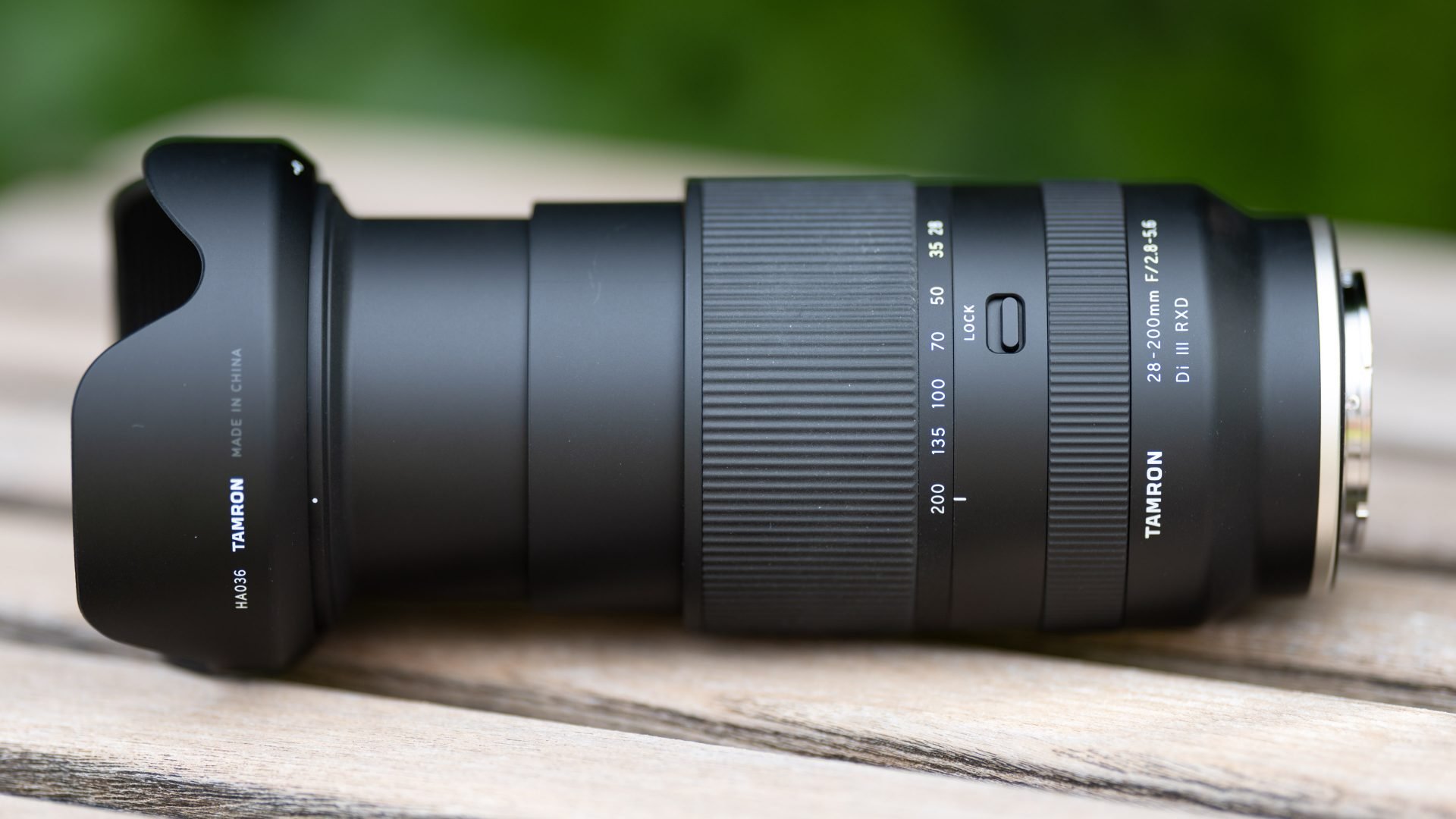
 The Tamron 28-200mm f2.8-5.6 Di III is a small and light all-in-one zoom designed for mirrorless cameras with full-frame sensors. At the time of writing, it was only available in Sony E-mount, and costs more in some regions than Sony’s own FE 24-240mm super-zoom, while lacking its broader zoom range and optical stabilization. But the Tamron offers a brighter focal ratio of f2.8 at the wide end, achieves a magnification of 1:3 from 0.19m, and is weather-sealed. But most importantly its optical performance is very convincing, astonishingly so for a 7.1x zoom lens. On the downside, the wide end starts at 28mm versus 24mm on rivals, it has no optical image stabilization, and there were some strange autofocus-misses which might be a problem with my copy of the lens - but worried me nonetheless. The shorter range is arguably the biggest factor to weigh-up, but if you don’t need to zoom as wide as 24mm, Tamron has designed a compelling super-zoom which clearly earns a Highly Recommended!
The Tamron 28-200mm f2.8-5.6 Di III is a small and light all-in-one zoom designed for mirrorless cameras with full-frame sensors. At the time of writing, it was only available in Sony E-mount, and costs more in some regions than Sony’s own FE 24-240mm super-zoom, while lacking its broader zoom range and optical stabilization. But the Tamron offers a brighter focal ratio of f2.8 at the wide end, achieves a magnification of 1:3 from 0.19m, and is weather-sealed. But most importantly its optical performance is very convincing, astonishingly so for a 7.1x zoom lens. On the downside, the wide end starts at 28mm versus 24mm on rivals, it has no optical image stabilization, and there were some strange autofocus-misses which might be a problem with my copy of the lens - but worried me nonetheless. The shorter range is arguably the biggest factor to weigh-up, but if you don’t need to zoom as wide as 24mm, Tamron has designed a compelling super-zoom which clearly earns a Highly Recommended!